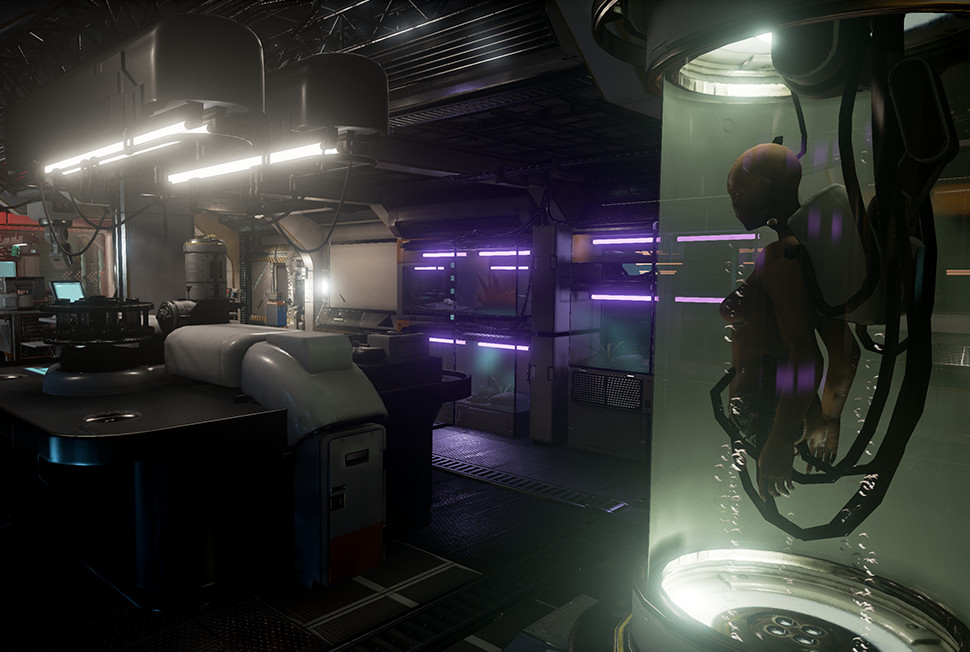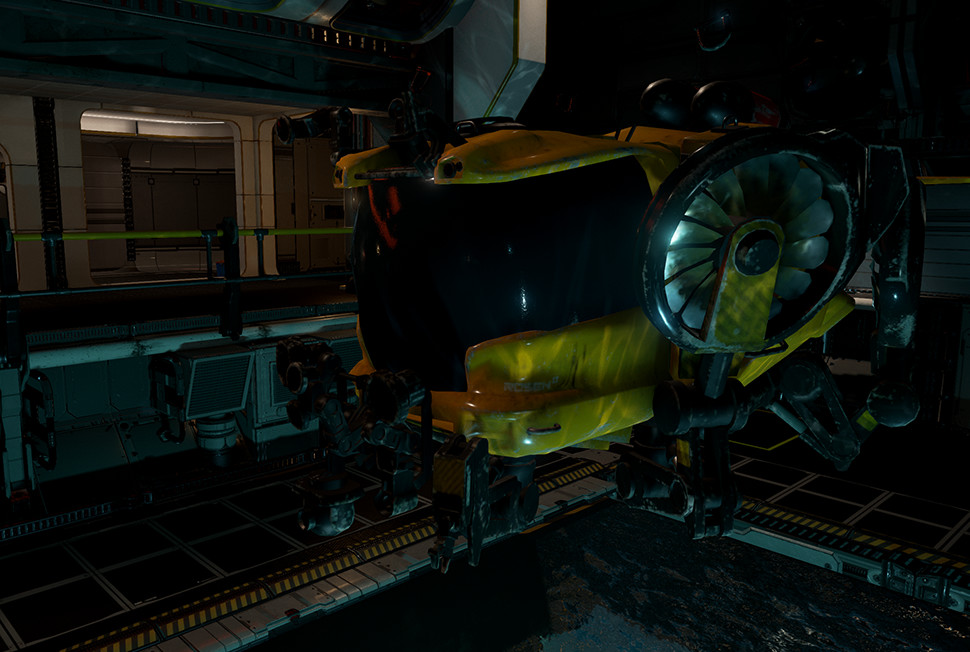As positively terrifying as it is, Resident Evil 7 played it safe. It’s easily one of our favorite VR games thus far, but it’s also essentially an enhanced version of the game you can play on standard screens with a standard controller. But how do you make a horror game with the full capabilities of VR tech? What does it mean if you bring your hands into the experience? How do you handle enemy encounters?
These are just some of the questions that Hammerhead VR’s Syren tackles, and it has some interesting answers, though they could do with a little polish.
Syren is set in a dark, dank underwater research facility, where a team of scientists have been carrying out brutal experiments on the titular mythical creatures, discovered in an ancient city lost to the oceans thousands of years ago. As you can probably guess those tests go awry and you, a member of that team, find yourself searching for a means of escape as twisted mechanical monsters stalk the creaky halls and linger in the shadows.
It’s more Tales of Terror than it is Resident Evil, though, and that feels intentional. Exploring the facility itself has an atmosphere akin to BioShock, largely thanks to the wonderfully detailed, cramped and claustrophobic environments, but game’s brand of fear is more about jump scares that make you chuckle afterwards rather than making you want to rip your headset off. There are moments that will get your heart pumping, but this is a more enjoyable sort of horror than what you’ll see in other games.
There isn’t any set mechanic to survival in Syren, no repetitive combat systems to defend yourself with or stealth meters to aid your sneaking. Each encounter with an enemy is a multi-threaded scenario with a number of different solutions that can play out organically. Early on, I found myself making great use of VR’s positional tracking to peek out behind corners and wait for an enemy to pass, biting my lip in hope they’d take a left instead of a right to clear the way. I’d then teleport like crazy (the game only lets you move so far) in a mad rush for safety.
Later on, I would stumble across elements in a room that I could use against Syrens, like a gas leak in a kitchen, items I could throw to distract them, or lockers I could hide in. The latter is a particularly heart-thumping use of VR, as I slowly twisted my head to follow one enemy’s movement, watching through a grate and not daring to make the slightest sound. It was as if I was really there in that locker, aware that the slightest knock could end my life, even if the game might not register the collision of hand and metal.
One of my favorite aspects of the game is that lack of systems. Syren simply asks what it would be like if you were really dropped into this situation. There’s no inventory system to store items, for example, you physically have to hold onto them. If you drop an object or hit it against a surface, you’ll probably alert the enemy. You don’t take the game’s mechanics into consideration, you take your physical presence into consideration. That’s something horror games really need to capitalize on going forward.
If a Syren does spot you then it’ll quickly give chase and more than likely end up gnawing on your face. They’ll kill you instantly, and you’ll have to start the level over. It can be frustrating, until you figure out how to get around an encounter. It’s very much a game of trial and error; spend four or five attempts working out what to do, then making your way to the next room, and then repeating the process. It does artificially extend the one to two hour length (you could probably run through the game in less than 30 minutes on a second playthrough), and I would have liked to have seen more than the handful of levels on offer here, even if the later stages bring some unexpected twists to the formula.
Ultimately, though, the game’s main enemy is polish. Though it’s visually arresting, I encountered a handful of bugs and a lack of sound effects that took the impact out what could have been some of the game’s more effective moments. Scripted sequences are not VR’s strong point, and Syren proves that in one or two places. On the other hand, there are times when it sounds like the enemy’s footsteps are right next to you, when they’re really in another room entirely, and I sometimes saw them stop right in front of me, confused by a door I might have walked through or table in their path.
It’s not enough to spoil the overall experience, though I’d have gladly seen Hammerhead spend an extra month fine tuning the game to keep the immersion intact right the way through.
Though brief, Syren proves itself to be a worthwhile taster of what VR can really do for horror games. While never fully capitalizing on that potential, there are some revelatory moments for the genre here, making you painfully aware of your own self as you hide behind crates and freeze on the spot. That alone helps overlook the short length and handful of bugs and blemishes, and makes Hammerhead VR itself a developer well worth watching.
Syren releases on February 15th on HTC Vive and Oculus Rift for $19.99. A PlayStation VR version is coming in March. Check out these official review guidelines to find out more about our process.



























